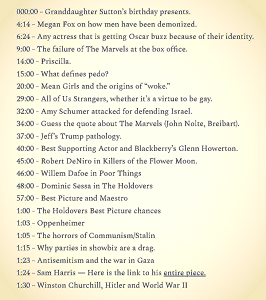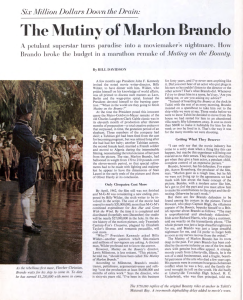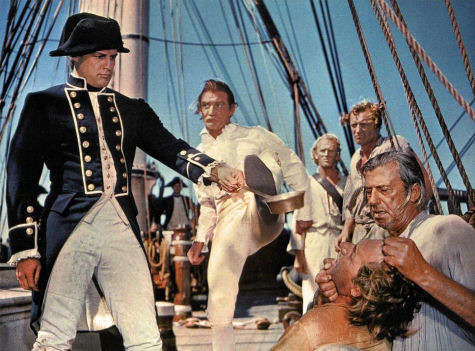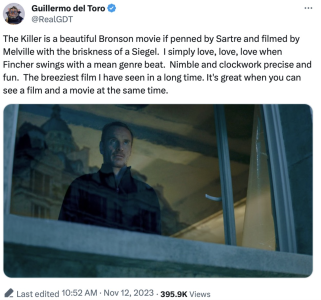Here’s the latest Oscar Poker schmoker, and here’s the link:



Hollywood’s second version of Mutiny on the Bounty opened on 11.8.62, or ten days after the conclusion of the tension-filled Cuban Missile Crisis.
This almost felt like a fitting crescendo as the film was widely regarded as a crisis itself, albeit a “what the hell happened?” kind. The final production tab was $27 million, or roughly $275 million in 2023 dollars — a startling level of exorbitance.
Bounty had been shooting for two years, partly under the directorial command of Sir Carol Reed but mostly Lewis Milestone, who didn’t get along wih star Marlon Brando and vice versa. A few months earlier the film had been publicized as a cost-overrun disaster, particularly by a June 1962 Saturday Evening Post cover story, written by Bill Davidson, that identified Brando as the principal culprit.
Production was marked by constant tempest (Reed either quit or was let go, and Milestone, his successor, also left under turbulent circumstances), largely, according to Davidson, due to Brando’s egoistic big-star behavior. Brando sued the Post for $5 million over claims that the article had wrongfully damaged his professional reputation. It did, in fact, do that.
Filming was almost as prolonged and costly as the $31 million Cleopatra, which would open seven months later in June 1963.
I wouldn’t call Mutiny on the Bounty a flawed film as much as a “good but not quite there” one. It’s actually a well-written, handsomeiy produced, eye-filling wow for the first 70% or 75%, and Bronislau Kaper‘s score is inescapably rousing in a crash-boom-bang sense.
I would give it an 8.5 grade up until and including the mutiny sequence. But the tension flies out the window after the mutiny, and the remainder of the film is just okay. And Brando’s (i.e., Fletcher Christian‘s) high-minded urging that he and the crew should return to England to plead their case? Totally absurd. Tantamount to suicide. I agree with the decision by Richard Harris‘s Mills and other crew members to burn the ship after Brando suggests this hair-brained notion.





Say what you will about Bounty‘s problems — historical inaccuracies and inventions, Brando’s affected performance as Christian, the floundering final act. The fact remains that this viscerally enjoyable, critically-dissed costumer is one of the the most handsome, lavishly-produced and beautifully scored films made during Hollywood’s fabled 70mm era, which lasted from the mid ’50s to the late ’60s.
It has a flamboyant “look at all the money we’re spending” quality that’s half-overbaked and half-absorbing. It’s pushing a certain pounding, big-studio swagger.
There’s a way to half-excuse Bounty for doing this. It was made, after all, at a time when self-important bigness was regarded as a kind of aesthetic attribute unto itself, with large casts, extended running times, dynamic musical scores (overtures, entr’actes, exit music) and intermissions all par for the course. And there’s no denying that a lot of skilled craftsmanship and precision went into this manifestation.
Bounty definitely has first-rate dialogue and editing, and three or four scenes that absolutely get the pulse going (leaving Portsmouth, rounding Cape Horn, the mutiny, the burning ship). And I happen to like and respect Brando’s performance — it gets darker and sadder as the film goes along — and you can’t say Trevor Howard‘s Captain Bligh doesn’t crack like a bullwhip. (Bosley Crowther‘s review said his emoting was imbued with “wire and scrap iron”, and that Brando’s came from “tinsel and cold cream”.) And Richard Harris and Hugh Griffith are fairly right-on. And everybody likes the topless Tahitian girls.
I’d forgotten how foppy and buffoonish Brando’s Fletcher Christian character is, and how frequently his contentious relationship with Trevor Howard‘s Captain Bligh is played for easy laughs during the first 100 minutes.
The extremely wide 2.76 to 1 Ultra Panavision image, shot by Robert Surtees and derived from the original 70mm elements, is really quite beautiful, and the colors are full and luscious.
My difficulties with the jokey humor aside, I have to acknowledge the “make love to that damn daughter of his” scene between Howard and Brando, and pay my respects to the way Brando pauses ever so slightly before and after he says the word “fight”. It’s the film’s wittiest moment — the only line that still makes me laugh out loud.
The decision not to offer a “making of” documentary on the Bounty Bluray was unfortunate, given that Mutiny on the Bounty‘s production history was one of the most expensive and out-of-control in Hollywood history, and therefore worth recounting for history.
Fox Home Video included an ambitious making-of-Cleopatra doc along with their Cleopatra disc, and it’s a far more engaging thing to watch than the film itself. Too bad Warner Home Video didn’t follow suit. Laurent Bouzereau or someone on his level could’ve really gone to town with it.
In an 11.12 Variety essay Variety‘s Owen Gleiberman conveys general of Alexander Payne’s The Holdovers. But he also discretely pisses on its pants leg or, you know, its desert boot.
“I like The Holdovers fine; I just don’t love it,” Gleiberman states. “Like Sideways, it’s a journey of redemption. Yet Paul Giamatti‘s ancient history teacher, in his mournfully witty and gnarled misanthropic way, is such a controlled, hemmed-in character that it’s hard to feel the force, however buried, of anything wild in him.”
Gleiberman laments that Giamatti’s Paul Hunham, like Sideways‘ Miles Raymond, doesn’t have more volcanic turbulence inside him. But Hunham is roughly 15 years older than Raymond, and isn’t even a struggling would-be novelist. His arc, obviously, is about somehow putting aside the knee-jerk disdain and behaving more like a human being.
“But in terms of how it stacks up in this year’s awards sweepstakes, I think The Holdovers now occupies a very ironic place,” Gleiberman goes on. “It’s competing with films, like Oppenheimer and Poor Things and Maestro and Barbie and Killers of the Flower Moon, that feel far more of their own time (even though several of them are rooted in history).
“Will The Holdovers have traction, at the box office and in the awards race? If so, it could be the contender that occupies what you might call the Green Book niche — a kind of retro comfort-food zone destined to appeal to more traditional Academy voters.
“For The Holdovers is at heart an odyssey of nostalgia that’s being sold as a holiday feel-good movie. The grand and rather nagging paradox at the heart of the film is that it’s a planned-out version of a ‘free form’ movie. The ’70s film it most recalls is The Last Detail, the Hal Ashby classic about three sailors, led by Jack Nicholson, wandering from city to city on a quiet odyssey of remorseful discovery.
“Watching The Last Detail, you always feel like you’re glimpsing lives that extend beyond the frame of the movie itself. The Holdovers, by contrast, is a movie where you can feel the calculation that went into every last detail.”
That’s not fair. Are you going to tell me, Owen, that Last Detail screenwriter Robert Towne didn’t carefully rewrite and hone and chisel every last line so it would deliver just so? Of course he did, and then Ashby and Nicholson probably chiselled and refined and maybe improvised a bit more on a page-by-page basis.

THE KILLER had the best fight scene of the year. The sound of every excruciating punch shook my theater, eliciting gasps from my crowd.
— Dan Marcus (@Danimalish) November 12, 2023